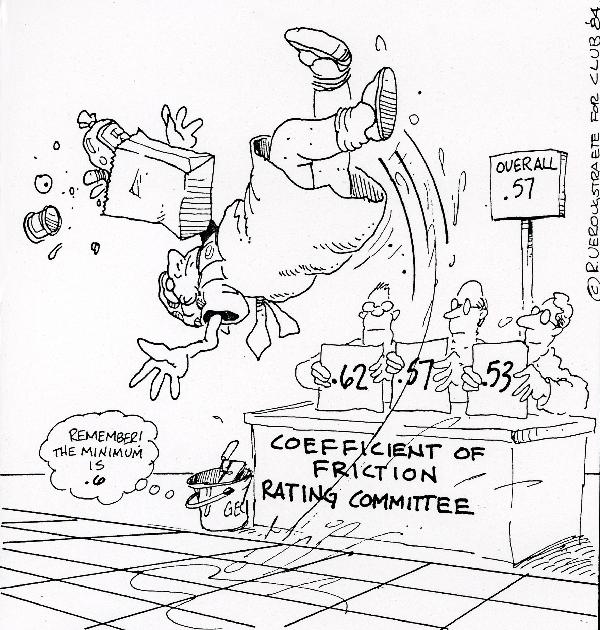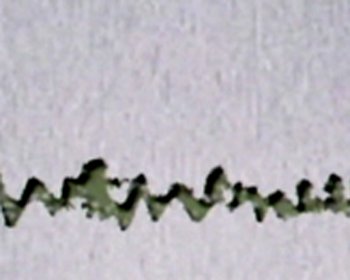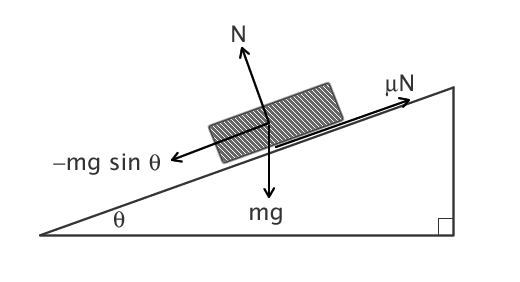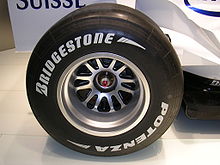Friction

Friction is an everyday physical phenomina and yet the precise mechanisms underlying it at the microscopic scale are still not completely understood. Research into friction is essential for advanced nanotechnology. It is essential in everyday life although often we expend a lot of effort to try to minimise it effects and so reduce energy loss and wear and tear on moving parts.
What is Friction?
Friction is the name given to the force that opposes the motion of one body sliding over another. It is called friction when the objects are solid, viscosity in liquids but it always opposes the motion of an object.
The first mathematical description was made by Charles Augustine de Coloumb in 1764. He proposed that friction could be classed as static or dynamic and proposed that the frictional force was frictional force dependent on the materials in contact.
Surface Contact
At an interface between two objects, the surfaces may appear to be smooth, however on a microscopic scale the surfaces are pitted and jagged. When another similar surface is in contact with it, the irregularities and peaks interlock. Australian Physicist, Frank Philip Bowden who worked on friction is quoted as saying: "Putting two solids together is rather like turning Switzerland upside down and standing it on Austria—the area of contact would be small."

The friction force depends on two factors:
- a) The materials that are in contact. The two materials and the nature of their surfaces. Rougher surfaces have higher coefficient of frictions but to slide apart. This makes sense in terms of a model in which friction is described as arising from chemical bonds between the atoms of the two surfaces at their points of contact: very flat surfaces allow more atoms to come in contact
- b) The force pushing the two surfaces together. Pushing the surfaces together causes the more of the asperities to come together and increases the surface area in contact with each other.
These can be summaried with the equation, $F = \mu F_{N}$ where $F_N$ is the normal force and $\mu$ is the coefficient of friction. Known as Coloumb's equation.
Experimental Determination of the Coefficient of friction, μ
A weight is placed onto the inclined ramp. The weight will want to slide but is prevented from doing so by the frictional force between the two touching surfaces.
If the ramp is inclined further, the frictional force will grow until the point that it is unable to prevent the mass from sliding. Just before the weight slides, we are at the limiting friction.
$F=\mu N$ where $F$ is the frictional force, $\mu$ is the coefficient of friction and $N$ is the normal force acting particularly to the surface of contact. Since the weight is not moving this force is equal and opposite to the vertical component of the weight force on the ramp, it is defined by:
$${F_{N}= mg\cos(\theta)}$$
At the point of limiting friction, the friction force is equal to the component of the weight force parallel to the slope of the ramp.
$${\mu F_N=mg\sin(\theta)}$$
Substuting for $F_N$ gives: $F = \mu F_{N}$
Equating terms:
$${mg\sin(\theta) =\mu mg\cos(\theta)}$$
Rearranging for $\mu$
$${\mu =\tan(\theta)}$$
 Experimental determination of coefficient of friction.
Experimental determination of coefficient of friction.
What is rather counterintuitive about this is, that mass, the surface area or the force of gravity affect the coefficient of friction only the two surfaces that are in contact. The values for the coefficient of friction for different pairs of materials are tabulated from experimental results. The range of values is about 10-2 for smooth surfaces to 1 for the roughest surfaces.
Dynamic Friction or Kinetic Friction
 A microscopic model of friction treats the surfaces in contact as being continually, bonded by small springs that form, strech and break.[1]
A microscopic model of friction treats the surfaces in contact as being continually, bonded by small springs that form, strech and break.[1]
Once an object has started to move, the irregularities of the surface must run over each other. Static friction becomes dynamic friction or kinetic friction. The moving surfaces do not have time to form as many bonds where the surfaces are in contact and so kinetic friction is less than static friction. but due to the nature of the surfaces, any contamination or grease can alter the results dramatically. When great care is taken to ensure that the surfaces are smooth and extremely clean at the microscopic level, the distinction between static and dynamic friction are more difficult decern.
Nanotribology
Nanotribology is the study of friction and wear processes on the nanometer scale. In force microscopy, friction forces arise when the probing tip slides over the sample surface with a well-defined normal load. They are detected as torsion of the cantilever sustaining the tip. On some materials friction can be traced down to the atomic scale.
Wide Car Tyres and Friction
 Why do high-powered cars have wide tyres if friction doesn't depend on surface area? Wide tyres have better grip, but as we have shown, the coefficient of friction does not depend on the surface area. There are many factors at work in the grip of a tyre, not just friction. In the first instance, it may not be that you are comparing like with like. Wider tyres are made of softer compounds of rubber, which have a better coefficient friction. Wider tyres also have lower sidewalls for less deformation in cornering which change the geometry of the tyre. Also friction of a real rubber tyre on tarmac road is very different to the friction concept that is demonstrated in the lab. On the road, grip and this is more than just friction, there is a keying of the rubber into the tarmac, like the meshing of gears this produces additional force to keep the car on the road. So increasing the width of the tyre does increase the chance of grip being maintained. For powerful cars, we also want to reduce the onset of wheelspin, which would then be a problem of kinetic friction with a lower coefficient of friction.
Why do high-powered cars have wide tyres if friction doesn't depend on surface area? Wide tyres have better grip, but as we have shown, the coefficient of friction does not depend on the surface area. There are many factors at work in the grip of a tyre, not just friction. In the first instance, it may not be that you are comparing like with like. Wider tyres are made of softer compounds of rubber, which have a better coefficient friction. Wider tyres also have lower sidewalls for less deformation in cornering which change the geometry of the tyre. Also friction of a real rubber tyre on tarmac road is very different to the friction concept that is demonstrated in the lab. On the road, grip and this is more than just friction, there is a keying of the rubber into the tarmac, like the meshing of gears this produces additional force to keep the car on the road. So increasing the width of the tyre does increase the chance of grip being maintained. For powerful cars, we also want to reduce the onset of wheelspin, which would then be a problem of kinetic friction with a lower coefficient of friction.
